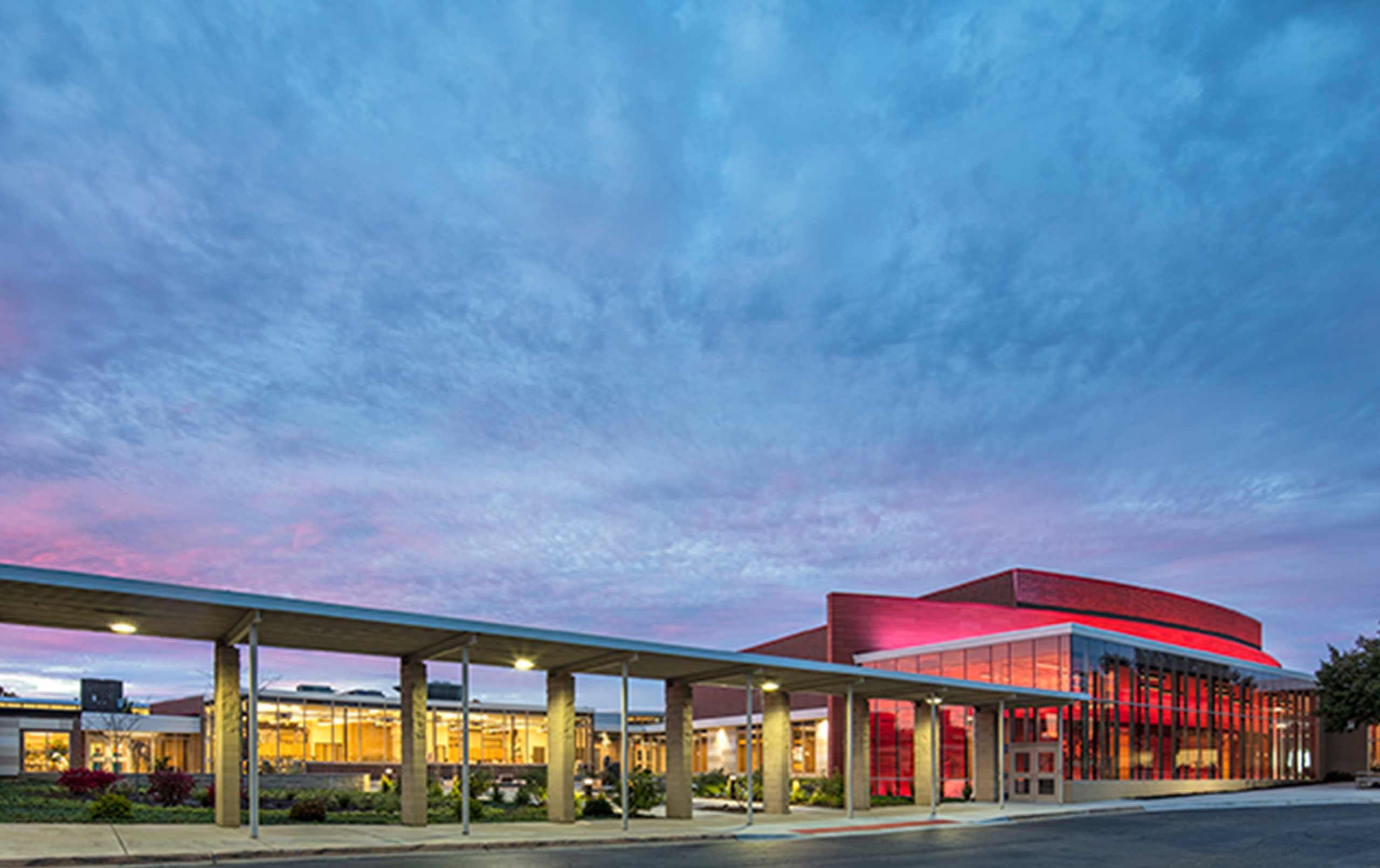
Performing Arts Center strengthens district/community connection, supports Marquardt Middle School curriculum changes that use fine arts to build student confidence and teamwork skills
[Glendale Heights, IL] – In 2006, Marquardt School District 15 (MSD15) started an orchestra program. Thirty-six students joined. Some questioned why a middle school would need such a program. The district had a straightforward response: because kids were interested and early involvement in the arts has a long-term impact on student success. Today, 186 students are enrolled in the program.
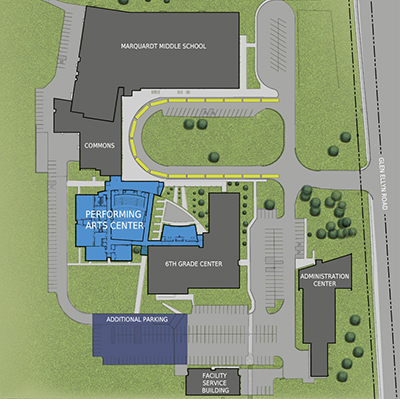
It was with that same dedication to the enduring power of the fine arts that MSD15 opened its Performing Arts Center (PAC) in summer of 2017. The 33,000-square-foot facility connected the sixth and seventh/eighth grade buildings to create a unified middle school campus. The PAC has allowed the school to redesign its curriculum so that all students get fine arts education. It has also paved the way for the school’s transition to a true middle school philosophy, in which teachers work in teams to help a core group of students achieve social-emotional development and academic success.
Marquardt Middle School principal Meredith Haugens said, “It’s not just the space but also the enhanced programming that allows us to make sure students are on the path to being college and career ready.”
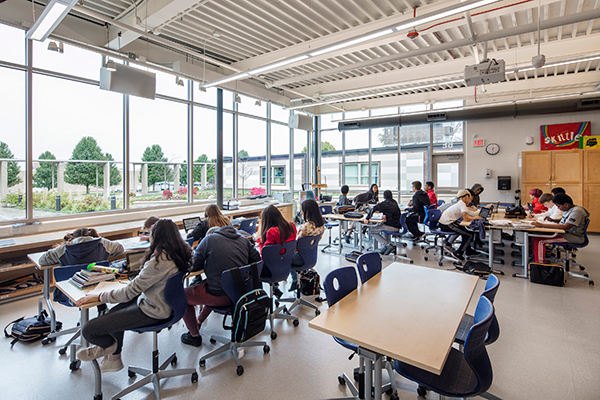
In the year-and-a-half since the project’s completion, Haugens and her staff have witnessed student confidence and interpersonal skills rise as the middle schoolers participate in activities in the PAC ranging from musical and dramatic performances to projects that combine disciplines.
Watch the video below to see MSD15 administrators and teachers discuss the Marquardt PAC.
The Marquardt PAC, designed by Legat Architects and Slingshot Architecture and built by IHC Construction, features a 500-seat auditorium, as well as rooms for art, band, orchestra, choir, and drama. Additionally, a new STEAM (i.e., science, technology, engineering, art, math) lab supports interdisciplinary learning. It finished on time and within budget, without increasing the annual debt service tax rate to the district.
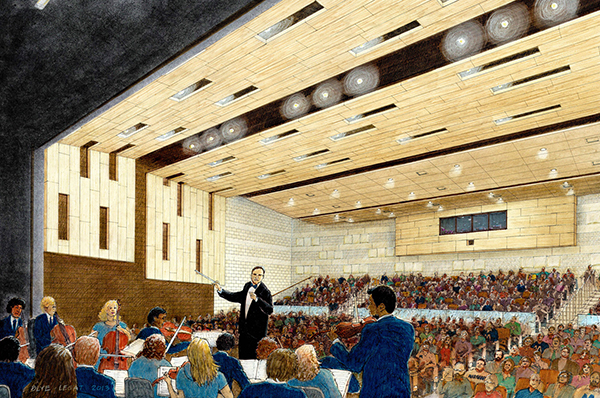
Planning Pays Off
The Marquardt PAC project didn’t come off without a hitch—in 2012, the district and Legat/Slingshot were 95% through the design of the facility. Then the project got shelved due to state funding issues.
Few predicted that five years later, the Marquardt community would gather in a 500-seat auditorium with advanced audiovisual systems to celebrate completion of the new PAC. The project came to fruition because the district and the architect, in a partnership that spans 25 years, acted quickly to take advantage of a state educational grant.
In November of 2016, Qualified School Construction Bonds (QSCB) became available to schools across Illinois. The State announced a brief window for districts to participate in a competitive application process to be considered for those bonds. Since MSD15 and Legat/Slingshot had done planning, they quickly assembled a thorough application.
“The project needed to be shovel-ready,” said Legat project manager Jeff Sandberg. “We provided preliminary design and floor plans, along with construction cost estimating included in the package for QSCB.”
In the end, MSD15 was one of only 29 Illinois districts—and the only DuPage County district—selected to receive the subsidy.

Roadside Luminary
For decades, when people drove by Marquardt Middle School at night, they saw two dark one-story structures with a large gap between them.
Now, nighttime drivers on Glen Ellyn road see the PAC’s colorful halo of LED lights and illuminated lobby. During the day, the wall of terra cotta-colored panels that embraces the auditorium draws attention and welcomes the community.
Outside the vestibule, what was once a parking lot has become a landscaped courtyard with a fountain. Here audiences can gather before or after performances during the warmer months, or students in the adjacent new art rooms can find inspiration for their projects.
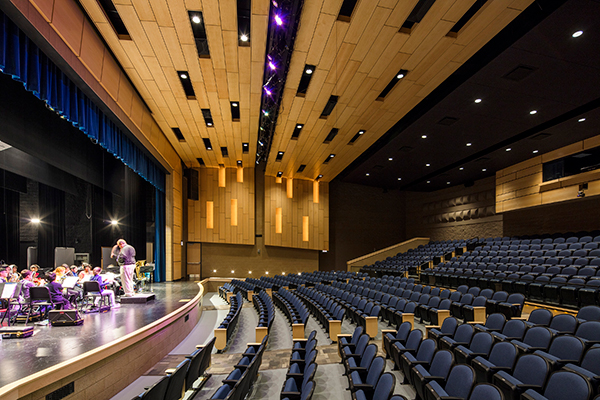
Auditorium Boosts Student Interest, Parent Involvement
Prior to the PAC, Marquardt Middle School performances happened in the 1980s-era gym, where fluorescent lighting radiated on parents in bleachers and metal folding chairs.
Orchestra teacher Jen Baker remembers when her students would be a few bars into a beautiful ballad and on the brink of an “amazing musical moment.” Then a loud squeak from an air vent would disrupt them. But they had to go on. A few bars later, bleacher clomping and creaking would compete for attention.
The new PAC’s auditorium makes those discomforts and distractions a thing of the past. It includes all the elements of a professional venue: LED lighting, wood acoustic clouds, premium audiovisual systems, stage rigging, and a fly loft.
Performers have 16 wireless channels that are “crystal clear,” according music teacher and choir/technical director Ross Gentry. That’s a big difference from previous performances, when microphones sometimes had to compete with baby monitors at the apartment complex next door to the gym.
Baker said, “It’s not just the quality of sound that’s better, but we’re also able to aesthetically improve our performances.” She gives the example of a screen that can drop down to graphically create a “warm, cozy ambiance” for a winter concert.
Gentry added, “We’re really only limited by our imagination.”
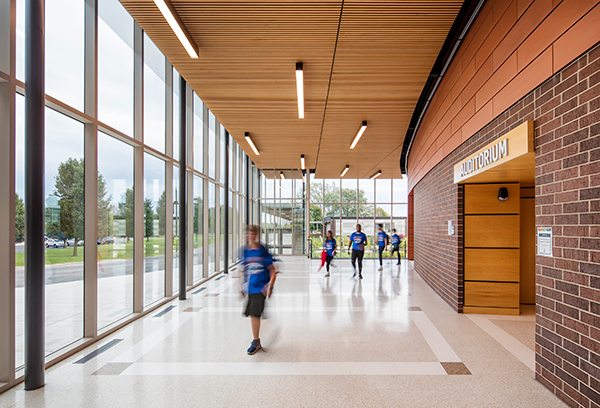
Parent and music booster Ramon Reyna experienced performances in both the old and the new gym. “It’s like being in a concert hall versus an echo room,” he said. “In the new auditorium, there’s an element of pride. You see it in both the students who perform better and the parents and grandparents, who are more involved in what their children are doing on stage.”
According to Gentry, the auditorium has led to a dramatic rise in student interest in fine arts-related programs. “When students came into the facility for the big open house/curriculum night, jaws dropped and eyes were wide open,” he said. “When we announced a theater technology group, 40 kids wanted to be involved.”
Marquardt Middle School students have used the auditorium for everything from musical and dramatic performances to project presentations and speech competitions. It has also hosted performances for district elementary schools and local high schools. Eventually, MSD15 expects to open the auditorium to outside groups to bring more educational and entertainment options to the community.

Orchestral Upgrade
Jen Baker used to call her program “orchestra a la carte”—she rolled carts from her old office into the cafeteria. There she corralled her students into the corner that was best for acoustics. During practice before school, her students had to contend with several other sounds: buses arriving, other students eating breakfast, music from the cafeteria. Sometimes, when the cafeteria wasn’t available, students practiced in a hallway.
The PAC brought Baker a spacious orchestra room complete with clerestories (high windows) and sound-absorbing acoustic panels. Among its amenities is recording equipment that allows students to hear themselves on “reality check Fridays,” as well as a humidified instrument closet that has cut down on instrument repair expenses.
Baker said, “When my students came into the new orchestra room the first day, they were in awe. It continued that way throughout the year.”
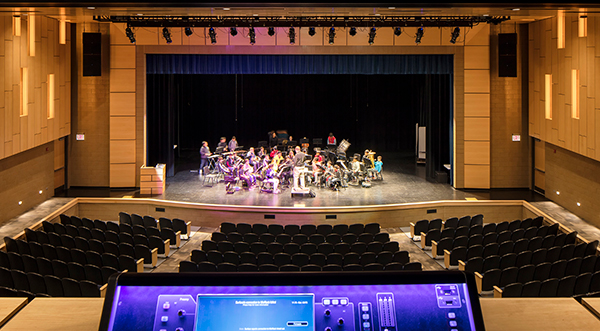
Benefits Beyond the Performing Arts
MSD15’s Superintendent Jerry O’Shea is adamant about giving every MSD15 student an opportunity to explore the arts. He said, “Some of our families might not have access to the private lessons that students in nearby districts get. Why shouldn’t we have a band, orchestra, and drama group? Our students deserve that.”
The district believes that early experiences in the fine arts better prepare students for high school, college, and beyond . . . no matter what career they choose to pursue.
Ross Gentry contends that the skills the students develop within the PAC are not limited to music, drama, and “pretty performances.” He said, “Singing or playing an instrument before an audience helps take away the fear of performing. Also, all these artistic elements require working with others . . . a skill that students are going to need. It really does translate to possible career positions down the line.”
Additionally, the PAC brings opportunities to explore non-performance subjects related to the fine arts. A middle schooler who gets interested in operating the auditorium’s audiovisual equipment, for instance, will be much more willing to pursue that interest in the future.
“We’re not necessarily trying to create musicians or actors,” said O’Shea, “but rather giving kids opportunities to try on different hats so when they get to high school, they’re not saying, ‘I don’t think I can do that, but rather, ‘I’ve done that and would like to try it again.’”
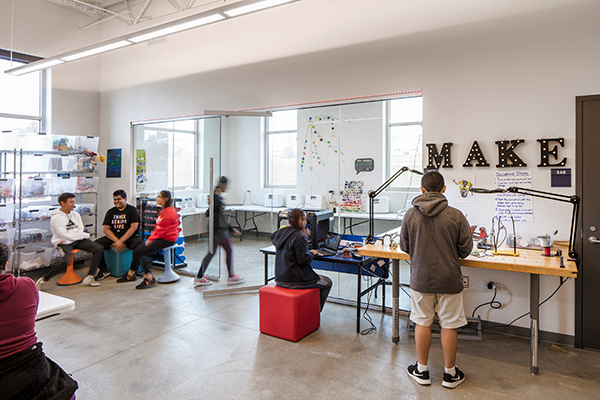
STEAM Lab Bridges Disciplines, Promotes Self-management
The delay in funding also allowed for an expansion to the original plans: in the bustling STEAM (science, technology, engineering, art, math) lab, students do cross-curricular activities that emphasize collaboration and problem solving.
“Typically, schools have separate classrooms for math, language arts, social studies, science, and other subjects.” said O’Shea. “The STEAM lab unites all of these in an open, flexible space where students can research, design, and construct projects.”
One recent STEAM lab project tasked students with using a 3D printer to design and produce objects that were useful to their school community. Creations included business card holders for administrative personnel, props for an elementary school book study, and stylus storage containers to help teachers organize classroom technology.
O’Shea said, “What’s happening in these STEAM labs teaches students to create a goal and work backwards to achieve it. When they get to high school or even college and they have six weeks to finish a project or paper, they know how to plan for it.”
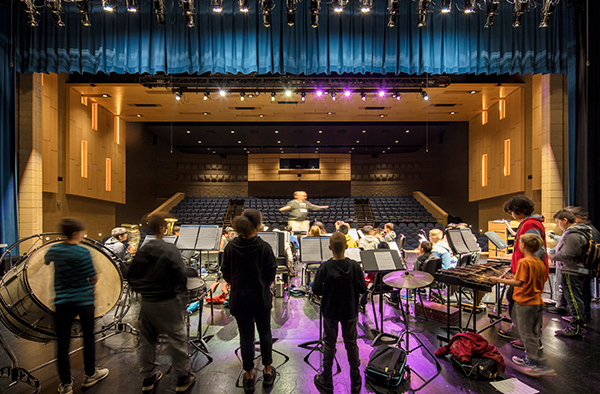
The Source of a Shifting Image
The first fall it was open, the PAC enabled the MMS choir to step off the risers and do a full-blown song and dance performance of Michael Jackson’s “Thriller,” complete with zombie makeup.
Ross Gentry said, “To see 50 kids and their parents with makeup kits in the drama room, the excitement was absolutely palatable. They were successful before they even hit the stage.”
A few months later, when the the lights went out at the end of the musical Beauty and the Beast, the screams energized student performers and gave them the feeling of a job well done, according to Gentry. “Parents came up on stage and took pictures of students and set pieces. I knew that would be the springboard for more productions.”
These are just two of the many success stories about the auditorium and the spaces that surround it. And word is spreading—among the organizations that have toured the Marquardt PAC are high school districts, libraries, and local community organizations.
“The Marquardt PAC is shifting our image,” said Meredith Haugens. “It’s enhanced the level of pride that we take in our building, not only among the staff but also among our students and the greater community. It shows that putting kids and their best interest is at the heart of everything we do.”
Contact us to learn more about performing arts or educational design or comment below to share your thoughts on this post.


